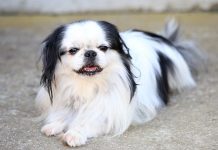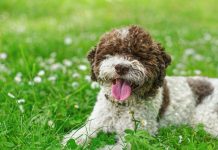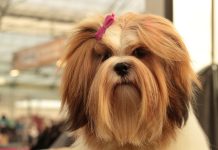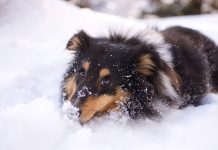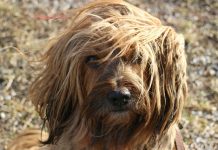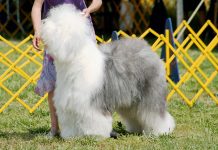History and Origins of the Rottweiler Breed:

The Rottweiler is a robust and versatile breed with a rich history dating back to ancient Rome. Originating in the town of Rottweil in Germany, these dogs were initially used by the Romans for herding cattle and guarding their camps during military campaigns. After the Roman Empire’s decline, Rottweilers continued to be used by German farmers for herding and protecting livestock.
In the 19th century, Rottweilers gained popularity as efficient cattle-driving and droving dogs. They were also employed as guard dogs and protectors of property due to their strength, loyalty, and intelligence. The breed’s exceptional guarding abilities made them invaluable for protecting money bags carried by butchers, leading to their nickname “Rottweiler Metzgerhund” (Rottweil Butcher’s Dog).
By the late 19th century, Rottweilers faced a decline in popularity with the rise of other breeds like the German Shepherd. However, dedicated breed enthusiasts worked to revive and standardize the breed’s characteristics. The Rottweiler was recognized by the American Kennel Club (AKC) in 1931 and has since become one of the most popular and recognizable breeds worldwide.
Today, Rottweilers are valued as loyal family companions, versatile working dogs, and dedicated protectors. They excel in various canine sports, including obedience, agility, and Schutzhund (protection dog) trials. Despite their imposing appearance, Rottweilers are known for their affectionate nature and deep bond with their families.
Physical Characteristics and Appearance of Rottweilers:
Rottweilers are medium to large-sized dogs with a powerful and muscular build. They are well-balanced and agile, exhibiting strength and endurance. Here are the key physical characteristics and appearance of Rottweilers:
- Size: Adult male Rottweilers typically stand between 24-27 inches (61-69 cm) at the shoulder, while females are slightly smaller, ranging from 22-25 inches (56-63 cm). The breed’s weight ranges from 80 to 135 pounds (36-61 kg), with males generally heavier than females.
- Coat: Rottweilers have a short, dense, and straight double coat that is weather-resistant. The outer coat is medium-length and coarse, providing protection from the elements. The undercoat is soft and dense.
- Color: Rottweilers have a distinctive black coat with rich tan markings on the cheeks, muzzle, chest, legs, and eyebrows. The markings are symmetrical and well-defined, highlighting the breed’s alert expression.
- Head: The Rottweiler’s head is broad and powerful, with a well-developed muzzle and strong jaws. The eyes are almond-shaped and dark brown, conveying an intelligent and confident expression.
- Ears: Rottweilers have medium-sized, triangular-shaped ears that are set high on the head. In some countries, ear cropping is performed for aesthetic purposes, though this practice is controversial and banned in many regions.
- Tail: The breed’s tail is traditionally docked in countries where this practice is permitted. When left natural, Rottweilers have a long, tapering tail that reaches to the hock.
- Gait: Rottweilers have a balanced and powerful gait, displaying effortless movement with good reach and drive. Their movement reflects strength, agility, and coordination.
Overall, Rottweilers are impressive dogs with a striking appearance and confident demeanor. Their physical characteristics reflect their heritage as versatile working dogs, capable of excelling in various roles ranging from guardianship to competitive sports.
Rottweiler Temperament and Personality Traits:
Rottweilers are renowned for their confident and courageous temperament. When properly trained and socialized, they make loyal, affectionate, and dependable companions. Understanding the key temperament and personality traits of Rottweilers is essential for prospective owners:
- Loyal and Devoted: Rottweilers are deeply loyal to their families and form strong bonds with their owners. They are known for their unwavering devotion and will protect their loved ones with great courage.
- Confident and Fearless: Rottweilers possess a natural confidence and fearlessness that makes them excellent guard dogs. They are alert, vigilant, and quick to respond to potential threats.
- Intelligent and Trainable: Rottweilers are highly intelligent dogs with a strong desire to please their owners. They excel in obedience training and thrive on mental stimulation and engaging activities.
- Protective Instincts: Due to their history as guard dogs and protectors of property, Rottweilers have strong protective instincts. They are naturally watchful and will act decisively to defend their territory or family members if they sense danger.
- Gentle and Affectionate: Despite their imposing appearance, Rottweilers have a gentle and affectionate nature towards their family members. They enjoy spending time with their loved ones and can be quite affectionate and cuddly.
- Good with Children: Rottweilers can be excellent family dogs when raised with children and properly trained. They are patient and tolerant of kids but should always be supervised during interactions due to their size and strength.
- Reserved with Strangers: Rottweilers are typically reserved and aloof with strangers. They may be wary of unfamiliar individuals and will assess new situations before warming up to new people.
- Energetic and Active: Rottweilers are energetic dogs that require regular exercise to maintain their physical and mental well-being. They enjoy activities such as brisk walks, jogging, hiking, and interactive play sessions.
- Versatile Working Dogs: Rottweilers excel in various canine sports and working roles, including obedience, tracking, agility, and protection work. They thrive on challenges and enjoy having a job to do.
- Socialization Needs: Early and ongoing socialization is crucial for Rottweilers to develop into well-adjusted and well-mannered adults. Exposing them to various people, animals, and environments from a young age helps prevent shyness or aggression.
Training and Socialization Needs for Rottweilers:
Proper training and socialization are essential for raising a well-behaved and well-adjusted Rottweiler. Here’s what you need to know about training and socialization needs for Rottweilers:
- Start Early: Begin training and socialization as soon as you bring your Rottweiler puppy home. Early exposure to positive experiences helps shape their behavior and temperament.
- Positive Reinforcement: Use positive reinforcement techniques such as treats, praise, and play to motivate and reward your Rottweiler during training sessions. Avoid harsh or punitive methods, as these can undermine trust and confidence.
- Basic Obedience: Teach basic obedience commands such as sit, stay, come, and heel. Consistent and patient training is key to instilling good manners and obedience.
- Socialize Extensively: Expose your Rottweiler puppy to different people, animals, sights, sounds, and environments. This helps prevent fearfulness and aggression towards strangers and unfamiliar situations.
- Controlled Exposures: Gradually introduce your Rottweiler to new experiences in a controlled and positive manner. Monitor their reactions and provide reassurance and encouragement.
- Behavioral Training: Address any behavioral issues or challenges early on, such as leash pulling, jumping, or resource guarding. Seek guidance from a professional trainer if needed.
- Consistent Leadership: Establish yourself as the pack leader by setting clear rules and boundaries for your Rottweiler. Consistent leadership builds trust and respect between you and your dog.
- Exercise and Mental Stimulation: Provide regular exercise and mental stimulation to keep your Rottweiler physically and mentally engaged. Interactive toys, puzzle games, and obedience training sessions are beneficial.
- Behavioral Monitoring: Monitor your Rottweiler’s behavior and temperament as they mature. Address any signs of aggression, fearfulness, or anxiety promptly with positive reinforcement and professional guidance.
By investing time and effort into training and socialization, you can help your Rottweiler reach their full potential as a well-behaved, confident, and balanced companion. Consistent training, positive reinforcement, and ongoing socialization are key to raising a happy and well-adjusted Rottweiler that thrives in various environments and social settings.
Health Considerations and Common Issues in Rottweilers:
Rottweilers are generally a healthy and robust breed, but like all dogs, they are prone to certain health conditions and genetic predispositions. Understanding the common health issues in Rottweilers can help you provide proactive care and early intervention when needed:
- Hip Dysplasia: Rottweilers are susceptible to hip dysplasia, a hereditary condition where the hip joint doesn’t develop properly. This can lead to arthritis and lameness. Regular exercise and maintaining a healthy weight can help reduce the risk.
- Elbow Dysplasia: Similar to hip dysplasia, elbow dysplasia is a common orthopedic problem in Rottweilers. It can cause lameness and pain in the front legs. Proper nutrition and controlled exercise can mitigate the risk.
- Osteochondritis Dissecans (OCD): OCD is a joint disorder that commonly affects large-breed dogs like Rottweilers. It occurs when cartilage doesn’t form properly, leading to joint pain and lameness. Surgical intervention may be necessary in severe cases.
- Gastric Dilatation-Volvulus (GDV): Also known as bloat, GDV is a life-threatening condition that affects deep-chested breeds like Rottweilers. It occurs when the stomach fills with gas and twists on itself. Immediate veterinary attention is required.
- Heart Disease: Rottweilers may be prone to various heart conditions, including aortic stenosis (narrowing of the heart valve) and dilated cardiomyopathy (enlarged heart chambers). Regular cardiac evaluations are recommended.
- Cancer: Rottweilers have a higher predisposition to certain types of cancer, such as osteosarcoma (bone cancer) and lymphoma. Early detection and treatment are crucial for managing cancer in dogs.
- Hypothyroidism: Some Rottweilers may develop hypothyroidism, a condition where the thyroid gland doesn’t produce enough hormones. Symptoms include weight gain, lethargy, and skin issues. It can be managed with medication.
- Allergies: Rottweilers can be prone to skin allergies and food sensitivities. Avoiding potential allergens and providing a balanced diet can help manage allergy-related symptoms.
- Eye Problems: Rottweilers may be susceptible to eye conditions such as progressive retinal atrophy (PRA) and entropion (inward rolling of the eyelids). Regular eye examinations are important for early detection and treatment.
- Dental Issues: Like many large breeds, Rottweilers are prone to dental problems such as periodontal disease and tartar buildup. Regular dental care, including brushing and professional cleanings, is essential.
Living with a Rottweiler: Suitable Environments and Lifestyle Considerations:

Rottweilers are versatile dogs that thrive in loving and active households. Consider the following lifestyle and environmental factors when living with a Rottweiler:
- Space: Rottweilers are medium to large-sized dogs that require adequate space to move around comfortably. A spacious yard or access to outdoor areas is ideal for them to exercise and play.
- Exercise Needs: Rottweilers are active dogs that need regular exercise to stay healthy and happy. Daily walks, interactive play sessions, and mental stimulation are essential to prevent boredom and behavioral issues.
- Training and Socialization: Proper training and early socialization are crucial for Rottweilers to develop good manners and behavior. Positive reinforcement methods work best with this intelligent breed.
- Family Interaction: Rottweilers are loyal and protective of their families. They thrive on companionship and should be included in family activities. Supervision is recommended when interacting with children due to their size and strength.
- Grooming Requirements: Rottweilers have a short, dense coat that requires regular brushing to minimize shedding and maintain skin health. Occasional baths and nail trims are also necessary.
- Healthcare: Regular veterinary check-ups, vaccinations, and preventive care are essential for maintaining your Rottweiler’s health. Stay vigilant for any signs of illness or discomfort and seek prompt veterinary attention when needed.
- Social Interaction: While Rottweilers are naturally protective, early socialization is key to preventing aggression towards strangers and other animals. Expose them to different environments and people from a young age.
- Safety Measures: Due to their protective instincts, Rottweilers should be securely fenced and supervised when outdoors. Proper training and obedience are important for managing their guarding behavior.
- Nutrition: Provide a balanced diet tailored to your Rottweiler’s age, activity level, and health needs. Avoid overfeeding to prevent obesity, which can exacerbate joint and health issues.
- Lifelong Commitment: Rottweilers are a long-lived breed, with a lifespan of 9-12 years on average. Ensure you are prepared for the long-term commitment of caring for a Rottweiler, including financial responsibilities and lifestyle adjustments.
By understanding and addressing the specific needs and considerations of Rottweilers, you can create a harmonious and fulfilling relationship with your canine companion. Consistent training, proper healthcare, and a loving environment are essential for raising a happy and healthy Rottweiler that thrives as a cherished member of your family.
Rottweiler Variations and Breeding Practices
Rottweilers are a distinct and recognizable breed with specific characteristics that breeders strive to maintain through responsible breeding practices. While there are variations in Rottweilers based on factors like lineage and regional breeding practices, the breed standard outlines key traits that reputable breeders aim to preserve. Here’s a look at variations and breeding practices related to Rottweilers:
Variations within the Rottweiler Breed:
- Working Lines vs. Show Lines: Rottweilers are often categorized into working lines and show lines based on their intended purpose. Working line Rottweilers are bred for their working abilities, including guarding, herding, and protection work. Show line Rottweilers are bred primarily for conformation and appearance, adhering closely to the breed standard.
- Size Variations: While there is a general standard for Rottweiler size, variations in size can occur based on genetics and breeding practices. Some Rottweilers may be larger or smaller than the standard size range, with males typically larger than females.
- Temperament Differences: Breeding practices can influence temperament variations within the breed. Some Rottweilers may exhibit a more protective and assertive temperament suitable for working roles, while others may have a calmer and more laid-back disposition suited for family companionship.
- Coat and Color Variations: Rottweilers have a distinct short, dense, and straight coat that is predominantly black with tan markings. While variations in coat texture and color can occur, reputable breeders aim to adhere to the breed standard to preserve the Rottweiler’s traditional appearance.
- Health and Genetic Variations: Responsible breeding practices prioritize health and genetic diversity to minimize the risk of hereditary health conditions. Reputable breeders conduct health screenings and genetic testing to ensure the overall health and well-being of their breeding dogs and offspring.
Breeding Practices for Rottweilers:
- Health Screening: Responsible breeders conduct thorough health screenings for genetic conditions common in Rottweilers, such as hip dysplasia, elbow dysplasia, heart issues, and eye problems. Screening helps identify potential health risks and enables informed breeding decisions.
- Temperament Assessment: Breeders evaluate the temperament and behavior of breeding dogs to ensure they exhibit desirable Rottweiler traits, including stability, confidence, and trainability. Temperament assessments help maintain breed standards for behavior and disposition.
- Selection of Breeding Stock: Reputable breeders carefully select breeding stock based on conformation, health, temperament, and adherence to the breed standard. They prioritize maintaining the integrity of the Rottweiler breed while improving desirable traits with each generation.
- Ethical Breeding Practices: Responsible breeders adhere to ethical breeding practices, including limiting the frequency of breeding, providing proper care and socialization for puppies, and prioritizing the health and well-being of breeding dogs.
- Pedigree and Lineage: Breeders track pedigree and lineage to maintain records of genetic history and ancestry. This helps identify desirable traits and potential health risks within breeding lines.
- Continued Education and Improvement: Reputable breeders participate in breed clubs, seminars, and educational programs to stay informed about advancements in breeding practices, health screening techniques, and genetic diversity.
- Puppy Placement and Support: Responsible breeders provide ongoing support to puppy buyers, including guidance on training, health care, and responsible ownership. They prioritize finding suitable homes that match the temperament and energy level of their Rottweiler puppies.
By following responsible breeding practices and prioritizing health, temperament, and adherence to breed standards, reputable breeders contribute to the preservation and improvement of the Rottweiler breed. It’s essential for prospective Rottweiler owners to seek out reputable breeders who prioritize the overall health, temperament, and well-being of their dogs through responsible breeding practices.
50 Best Names with Meanings for Rottweilers
Choosing the perfect name for your Rottweiler is an exciting part of welcoming them into your family. Here are 50 great names with meanings that can suit the strong and loyal nature of Rottweilers:
- Titan – Powerful and mighty
- Athena – Goddess of wisdom and war
- Nero – Strong and powerful, like the Roman Emperor
- Zara – Princess or blossom
- Thor – Norse god of thunder and strength
- Cleo – Short for Cleopatra, meaning glory of the father
- Magnum – Great or large
- Valkyrie – Mythological warrior women
- Duke – A noble title, perfect for a dignified Rottweiler
- Freya – Norse goddess of love and fertility
- Rex – Latin for king, suitable for a majestic Rottweiler
- Sasha – Defender of mankind
- Odin – Norse god of wisdom, war, and death
- Stella – Star, symbolizing brightness and strength
- Caesar – Title of Roman emperors, representing leadership
- Nova – New or exceptional
- Atlas – Titan who carried the world on his shoulders
- Luna – Moon, representing mystery and beauty
- Brutus – Strong and loyal, like Shakespeare’s character
- Hera – Greek queen of the gods
- Apollo – Greek god of music, healing, and prophecy
- Diesel – Powerful and energetic
- Cleatus – Illustrious or renowned
- Kona – Lady, a strong yet feminine name
- Blitz – Rapid and energetic
- Hera – Queen of the Greek gods
- Roxy – Bright and beautiful
- Maximus – Greatest, perfect for a large Rottweiler
- Ingrid – Beautiful and beloved
- Jax – Strong and determined
- Koda – Friend, suitable for a loyal companion
- Ryder – Knight, perfect for a protective Rottweiler
- Xena – Warrior princess
- Goliath – Giant and powerful
- Nala – Successful, beloved, or gift
- Bruno – Brown-haired, a classic Rottweiler name
- Mako – Sincere and truthful
- Sabre – Sharp and strong, like a Rottweiler’s bite
- Electra – Bright and radiant
- Rebel – Independent and spirited
- Mira – Wonderful or prosperous
- Fang – Symbolic of strength and protection
- Juno – Roman goddess of marriage and queen of the gods
- Kai – Unbreakable, perfect for a resilient Rottweiler
- Onyx – Black gemstone, reflecting strength and beauty
- Ranger – Guardian and protector
- Uma – Bright or splendid
- Axel – Peaceful and serene
- Trixie – Bringer of joy and happiness
- Rocco – Rest, or rock.

In conclusion, this comprehensive guide to Rottweiler dogs has provided a detailed exploration of this powerful and devoted breed. Throughout our discussion, we’ve delved into the rich history, distinctive characteristics, and essential care considerations that define Rottweilers. Known for their strength, loyalty, and intelligence, Rottweilers make excellent family protectors and companions for experienced dog owners. They are versatile working dogs that excel in various roles, from guarding and herding to therapy and obedience. Rottweilers thrive on positive training and socialization, forming strong bonds with their families. As you embark on your journey with a Rottweiler, may you appreciate their unique qualities and foster a deep and respectful relationship with this remarkable breed.








